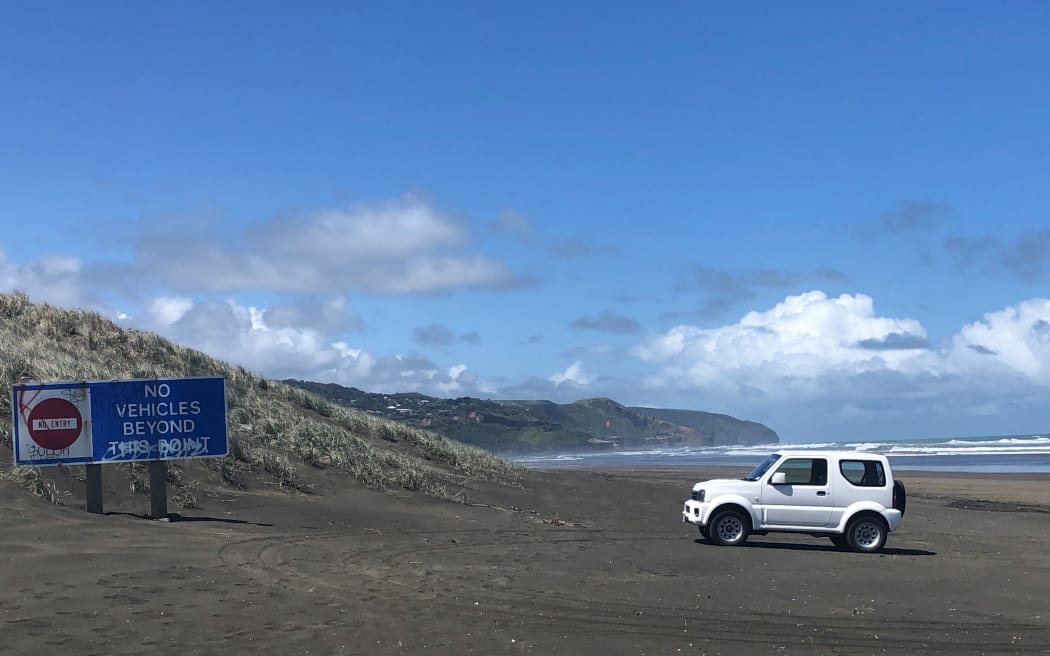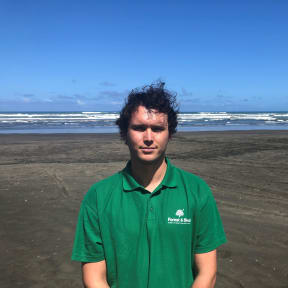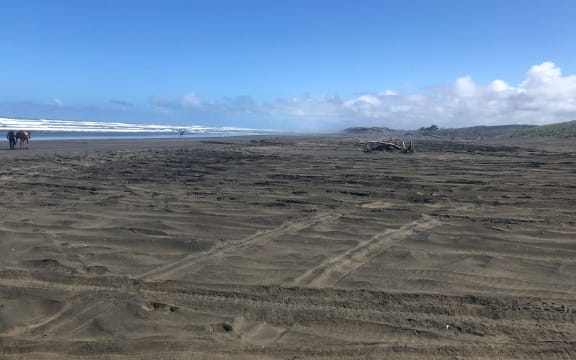The saying goes 'take only photographs, leave only footprints'. But some New Zealanders are taking their cars to the beach and leaving a tyre-track of destruction in their wake.

Muriwai Beach Photo: The Detail/Sharon Brettkelly
Among the imprints of thick, four-wheel drive tyre treads at Muriwai Beach on Auckland's west coast, a banded dotterel is picking its way across the sand just as a ute hits the beach only metres away.
The driver is doing everything by the rules: keeping below the 30km/h speed limit and heading down to the hard sand below the high tide mark.
The little dotterel camouflaged against the sand has escaped the big wheels on this quiet weekday morning but at weekends, it has hundreds of vehicles to contend with.
"The nests that you find on these coastlines are insanely camouflaged," says Carl Morgan, Forest and Bird's Auckland Regional Conservation Manager.

Carl Morgan from Forest and Bird. Photo: The Detail/Sharon Brettkelly
"Even if you don't directly strike a bird or strike a nest, the noise and vibrations that these vehicles cause can be enough to scare birds out of their nests.
"For example, the yellow eyed penguin, it will come into shore with food and if a bunch of vehicles are driving backwards and forwards it will start to digest the food it is meant to be saving for its young back in the nest, which can cause huge problems, and starvation of the chicks."
All beaches are roads under New Zealand law, but vehicles are banned in many places unless they are launching or retrieving a boat, or carrying out surf life saving, police, council or government activity. Some councils have added further restrictions to driving on beaches but Forest and Bird says that's not enough.
Forest and Bird and other groups argue that vehicles are killing wildlife, squashing nests and harming the native flora - even drivers who stick to the rules cause stress to the animals.
Morgan tells The Detail why they want councils to impose total bans and why they're appealing to the government to change laws to prohibit driving, except to emergency vehicles.
The responsibility for monitoring and managing beach driving is complicated by the numerous authorities involved and the remoteness of many of the communities, Morgan says.
For example, in Bay of Plenty, four organisations are responsible for the beaches in the region.
Bay of Plenty Regional Council looks at management of the coastal environment. Its coastal environment plan contains rules about vehicle access.

Tyre tracks on Muriwai Beach. Photo: The Detail/Sharon Brettkelly
The four territorial authorities - Tauranga City Council, Western Bay of Plenty District Council, Whakatāne District Council and Ōpōtiki District Council - are responsible for managing vehicle use on beaches within their areas.
The Department of Conservation has national policies on coastal management and manages coastal reserves. It protects native birds and animals that are threatened or endangered.
The police regulate dangerous behaviour and illegal vehicle use, like speeding and drink driving on beaches. They can prosecute criminal behaviour and bylaw breaches.
Te Anau-based Newsroom journalist Vaneesa Bellew tells The Detail that beach drivers are just one threat to the many species of rare birds that inhabit the Upukerora River bed, but the job of protecting them falls to a group of dedicated volunteers.
The Lower Upukerora Restoration Group (LURG) formed five years ago to monitor the banded dotterel, whose nests and eggs are not only easy targets for predators, but have been crushed by vehicles, beachgoers and dogs.
"They could go in and ban people from the area," she says. "But it's more about education. It's going to be that one percent of idiots who aren't going to read the signs and care and they are going to drive on the beach."
The Detail also meets some beach drivers, including a couple sleeping in the back of their car parked on dunes, a fisherman who enjoys driving along Muriwai Beach with his family even though they've had a near miss with another car, and a horse owner who says dangerous driving on the sand gets worse every year.
Find out how to listen and subscribe to The Detail here.
You can also stay up-to-date by liking us on Facebook or following us on Twitter.

Photo:


